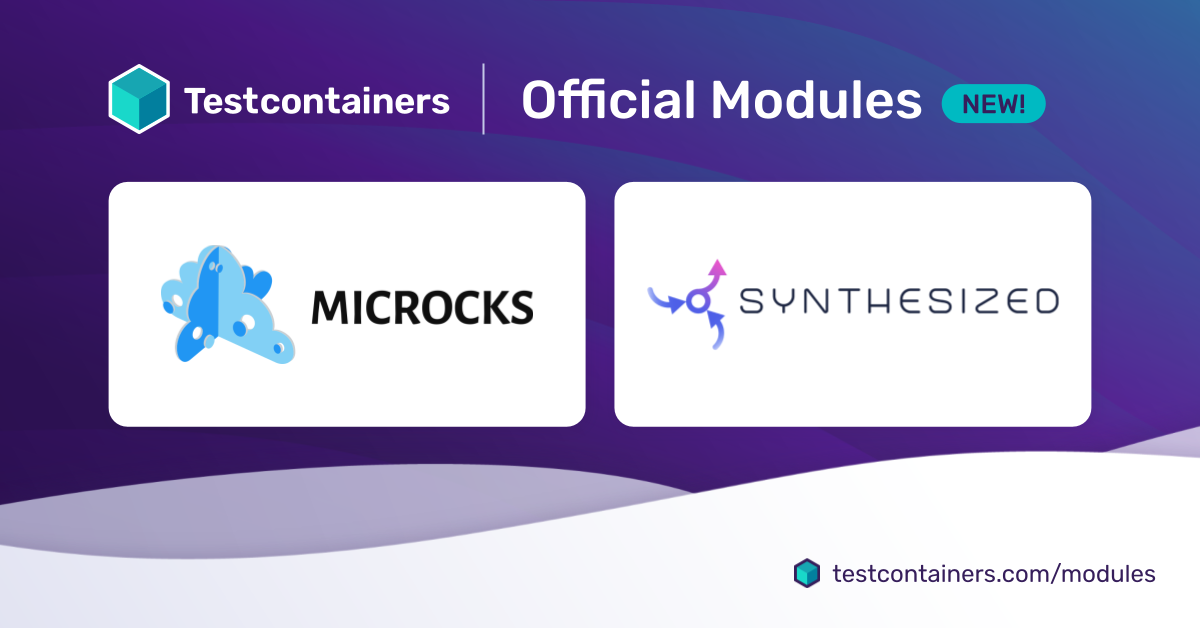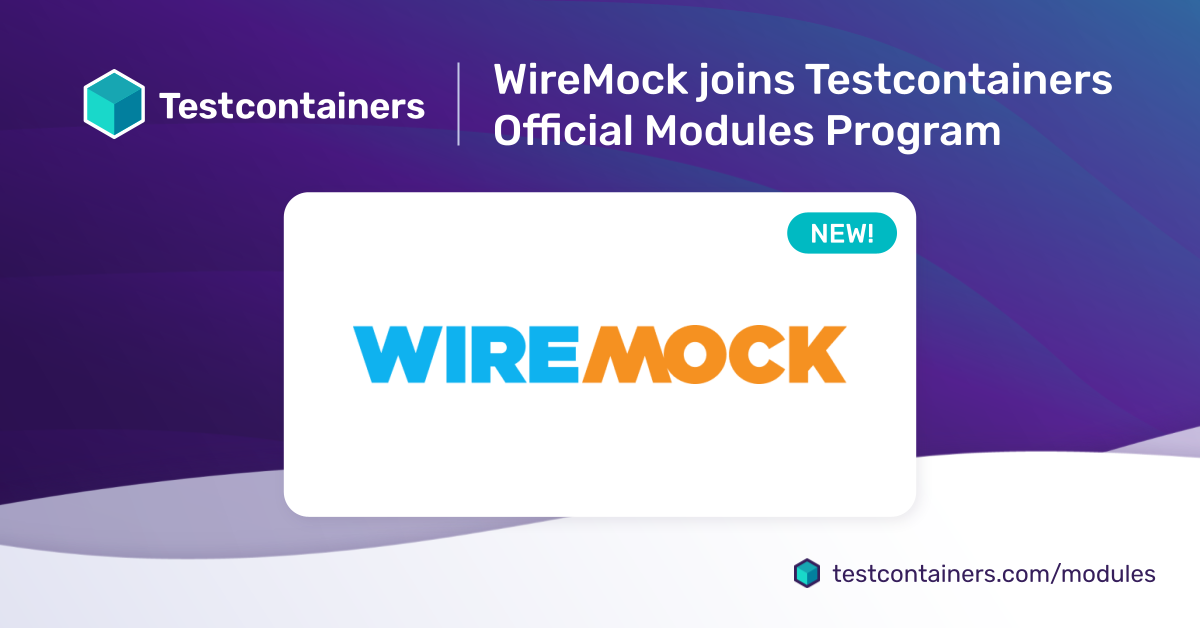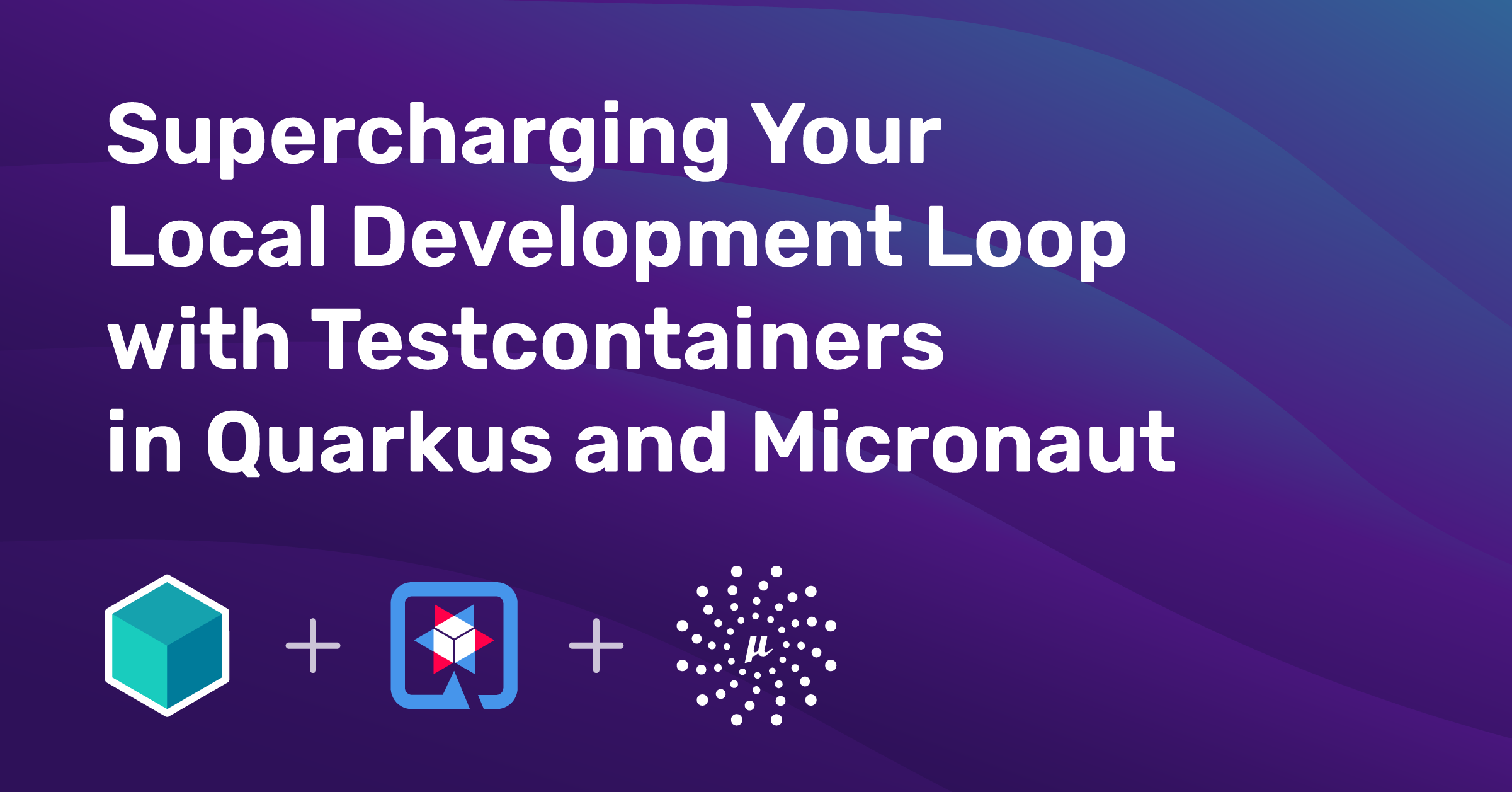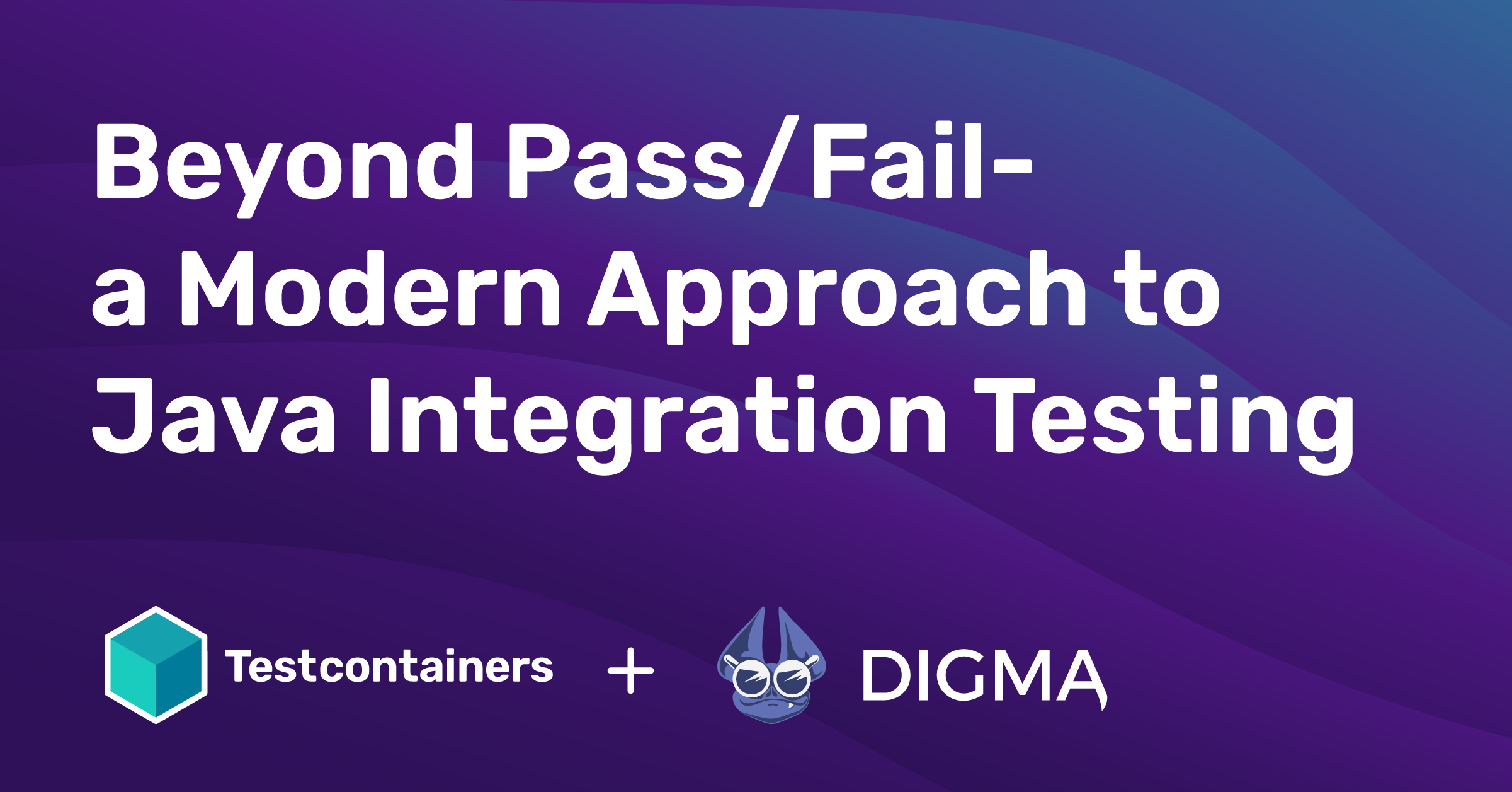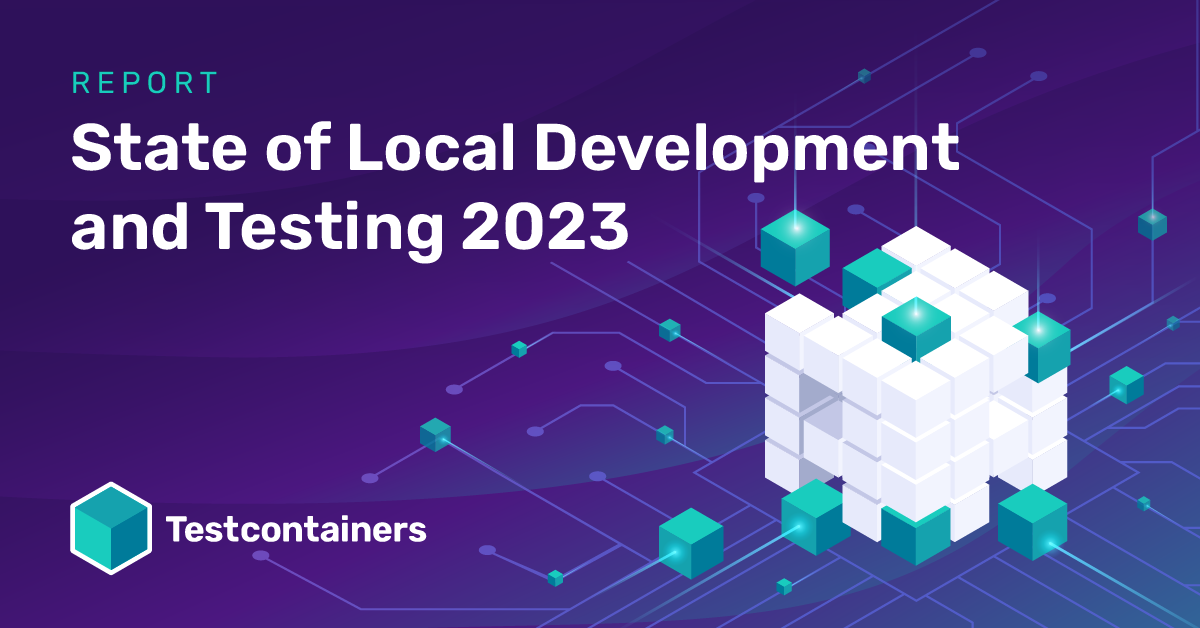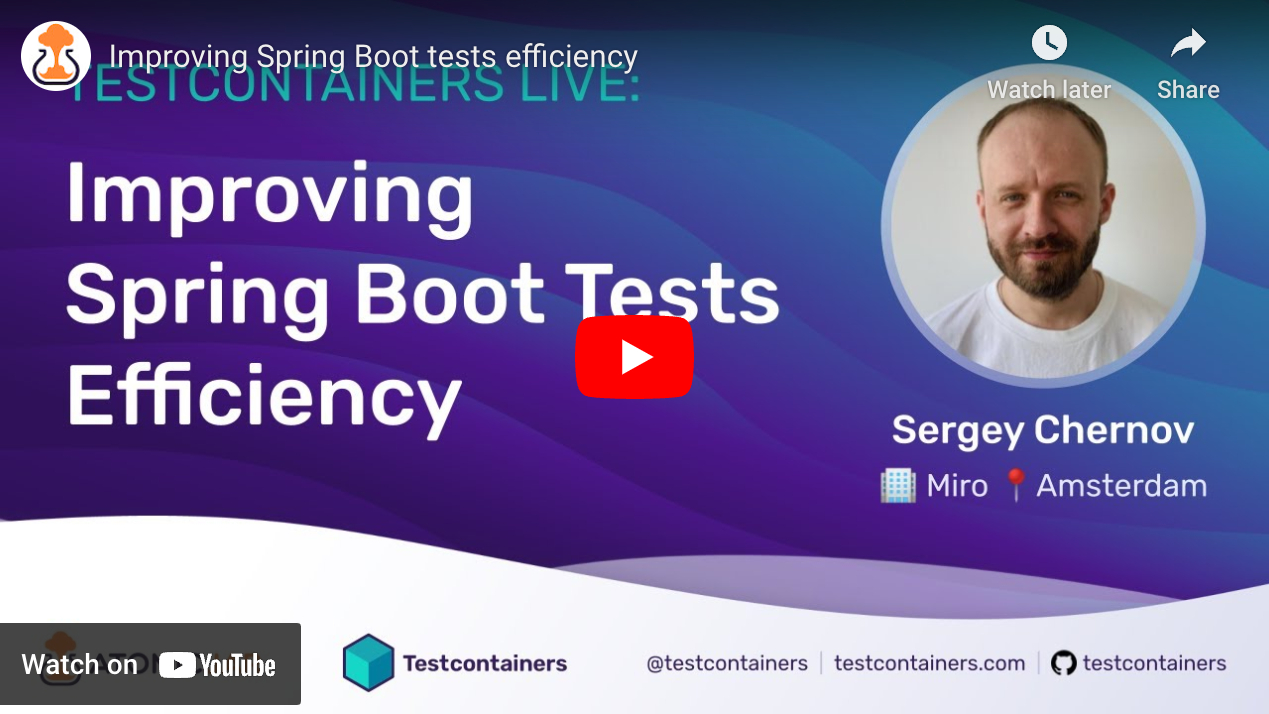- DATE:
- AUTHOR:
- The AtomicJar team

Testcontainers October Roundup
Hello! Welcome to the October edition of our Testcontainers newsletter. This edition is packed with exciting news about the latest features in Testcontainers Desktop, including the Embedded runtime improvements. We are also happy to share updates on Testcontainers Cloud, highlight the most recent releases of Testcontainers OSS libraries, and, of course, offer a variety of guides, blog posts, and live streams tailored to our community.
Testcontainers Desktop updates
Adopt Testcontainers Desktop as your container runtime (now in beta!)

As of version 1.4.18 Testcontainers Desktop now embeds a lightweight and fast runtime, optimized for Testcontainers usage. The embedded runtime is currently in beta, and only available on macOS 11 or later to benefit from Apple's native Virtualization Framework. Read more...
Tail logs and connect to a Testcontainers-based service

Testcontainers Desktop simplifies debugging by letting you define services and exposing them on fixed ports. Besides connecting a local debug tool or IDE plugin via a fixed port, the two most common debug actions are: reviewing container logs and opening a shell. Both are now only a click away in the "services" menu!
Open a terminal to your container runtime
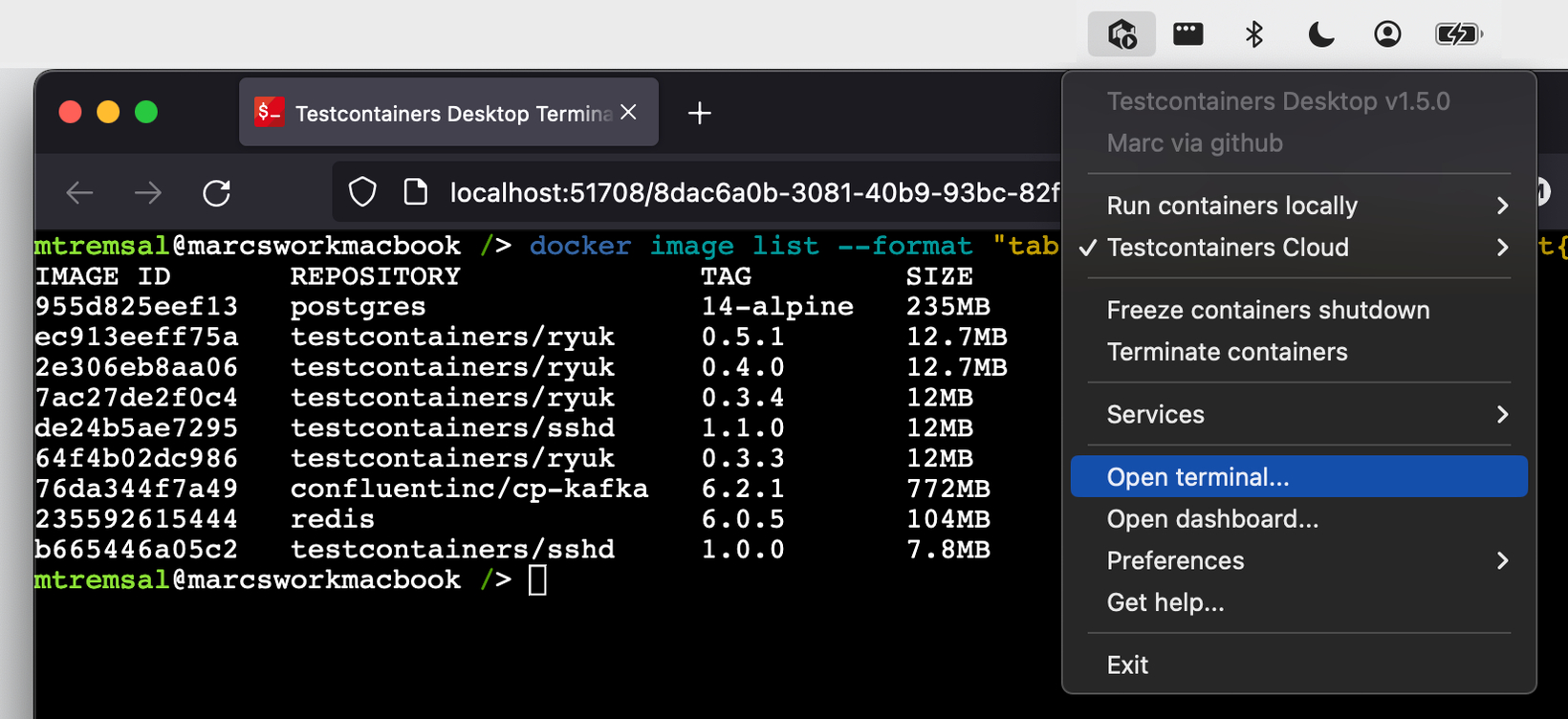
Testcontainers Desktop now makes it easy to "open a terminal" to your container runtime. If you rely on Testcontainers Cloud, you'll connect to the cloud worker, and if you run containers locally (including with the new embedded runtime!), you'll connect to the VM on your machine. Read more...
Consolidated Docs for Testcontainers Desktop
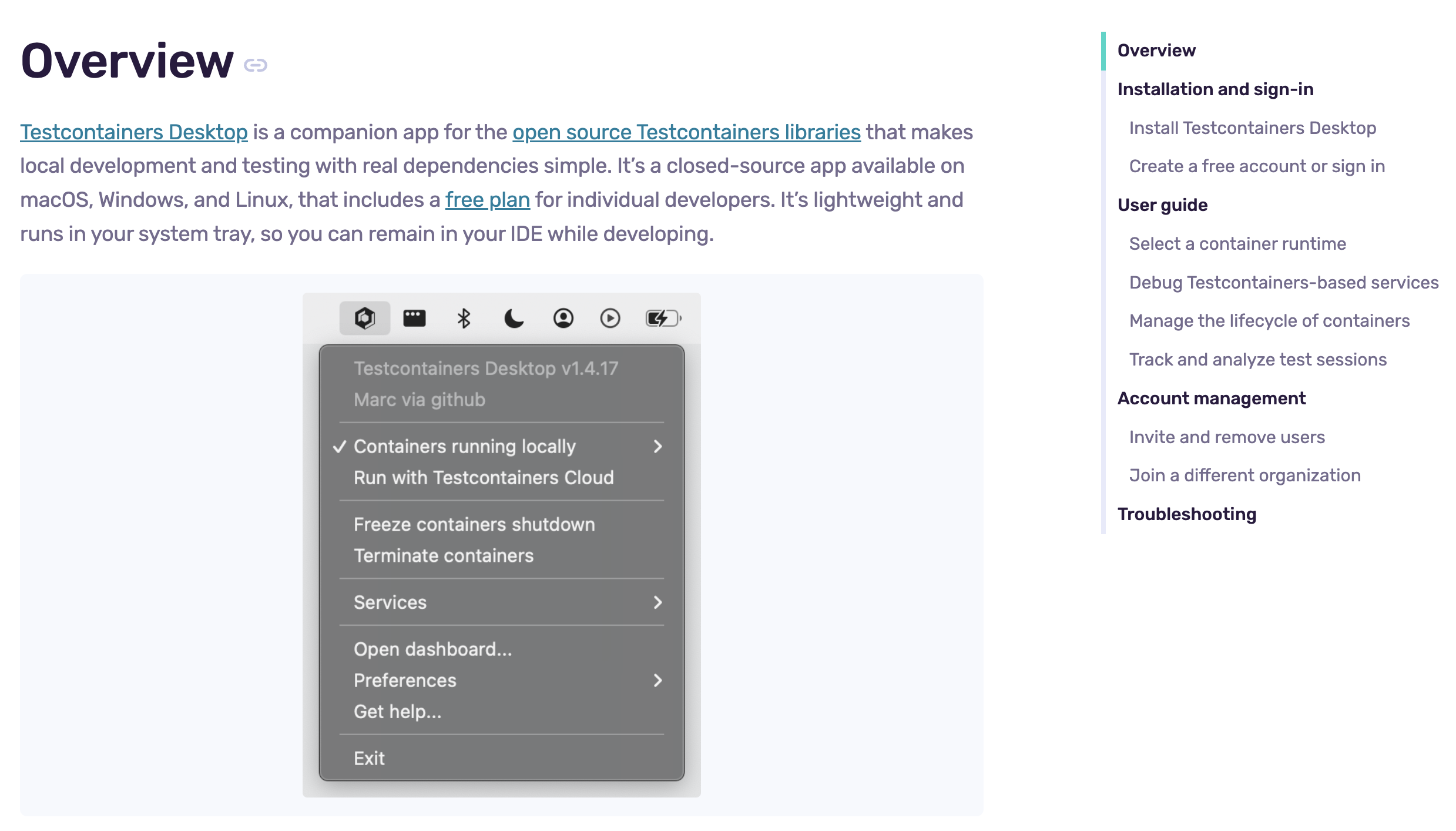
With the expanding range of features in Testcontainers Desktop app, it has become essential to centralize all relevant docs. Consequently, we have compiled comprehensive information regarding Installation and sign-in, User guide, Account management, and Troubleshooting in one place. Go to docs...
Testcontainers Cloud updates
Manage Testcontainers Cloud access to your private registry
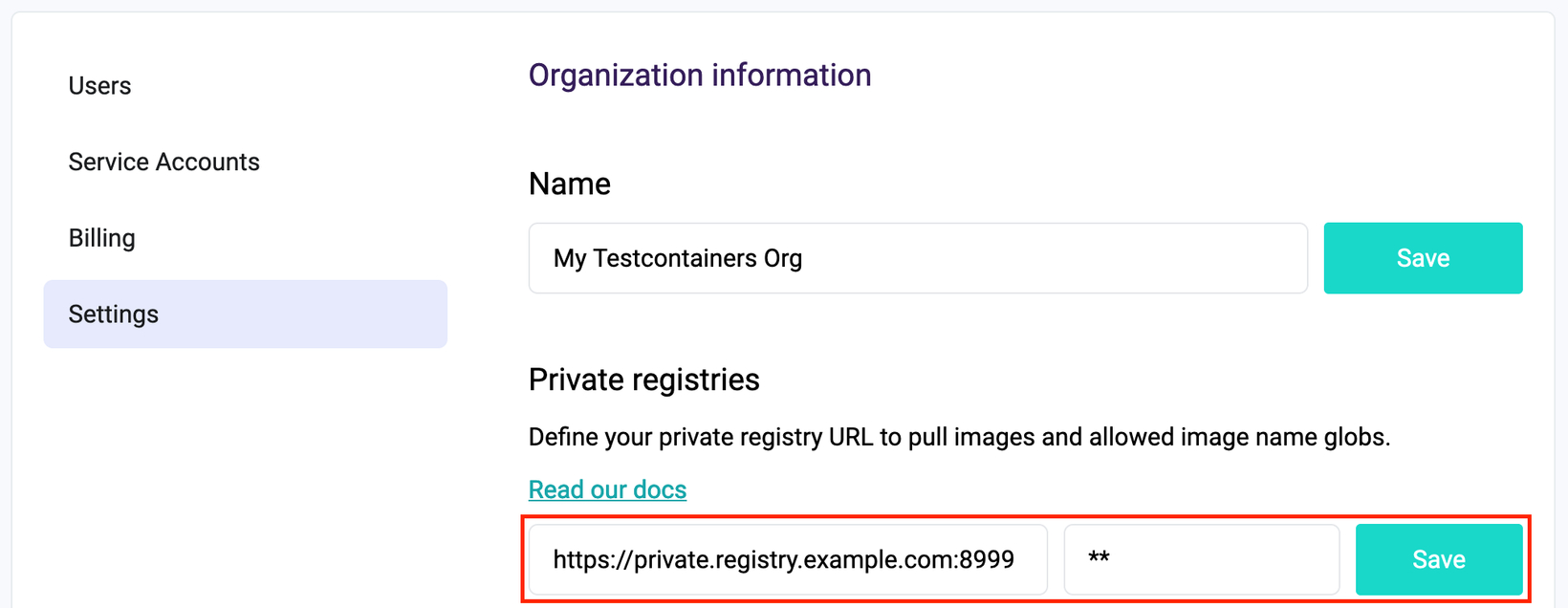
Using Testcontainers Cloud with a private registry (i.e. one that is not accessible from the public internet) requires configuring each agent so that it knows where to find it. To simplify adoption at scale, Testcontainers Cloud customers on a paid Team or Enterprise plan can now configure the private registry centrally in their organization's "Settings" page.
Testcontainers OSS News
Blogposts
Expanding the Testcontainers Official Modules Program with New Partners and Community Modules
We’re excited to announce the second wave of vendors joining the Testcontainers Official Modules program. This time Microcks and Synthesized joined our list of out official modules.
WireMock joins the Testcontainers Official Modules Program
We’re excited to announce WireMock joining the Testcontainers Official Modules program, recognizing the combination of WireMock and Testcontainers as a valuable way of simulating API for local development and testing.
Supercharging Your Local Development Loop with Testcontainers in Quarkus and Micronaut
In this article, you’ll learn all about Testcontainers and how to use it to automatically create environments so that you can run and test your code without any variability in software.
Beyond Pass/Fail- a Modern Approach to Java Integration Testing
There are numerous approaches to designing your testing projects, that greatly depend on the technology and type of product you are developing. In this post, we tried to reassess the testing pyramid, given the changes in the technology landscape to suggest a new default approach for testing your application.
Simplify Testing Golang Apps with testcontainers-go
Testcontainers provides APIs in various programming languages to facilitate and automate the setup and teardown of test environments. In this article, you will learn how to use testcontainers-go, the Golang version of the library, to create unit and integration tests for a Golang database-driven application.
Latest releases
Testcontainers for Java
The 1.19.1 release of Testcontainers for Java comes with new MinIO module. This new version allows now to define a custom ImagePullPolicy class for all of your containers via the existing Testcontainers configuration mechanisms (see the docs for details). Testcontainers for Java will now also differentiate between image pull and container startup time and log both values independently.
Testcontainers for Node
The 10.2.2 release of Testcontainers for Node is a maintenance version with some minor dependencies update.
Testcontainers for Go
The 0.26.0 release of Testcontainers for Go adds an option to exclude images that are built through Testcontainers from the default cleanup, introduces support for replacing image with with a custom and dynamic substitution mechanisms, respects.dockerignorefiles for image building similar to Docker CLI and comes with a new Cassandra and k6 module. Also there are a bunch of housekeeping and bugfixes improvements.
Community
State of Local Development and Testing 2023
For this report, we surveyed the Testcontainers community to understand the state of local development and testing in 2023. Read more to get seven key insights and trends.
Upcoming events
Testing applications with Oracle Database with Gerald Venzl

YouTube stream on Nov 15, 2023
In this session, we'll answer all your questions about the Oracle database and how to test it. Will it work with Testcontainers? Which images can you use? And everything in between!
Gerald Venzl is a Senior Director of Product Management for Oracle. During his career, Gerald has worked as a Developer, DBA, Performance Engineer, Software Architect, Consultant, Enterprise Architect, and Distinguished Product Manager before his current role. Gerald focuses on advocating how to build systems that offer flexibility yet still meet the users’ needs. He is also a member of the ISO SQL Standard committee.
Improving Spring Boot tests efficiency with Sergey Chernov
In this session, Sergey, a Staff Engineer at Miro, talked about Spring Boot tests, how context initialization happens, and how you can optimize your test suite to limit the concurrent overhead of the contexts with automatic suite ordering and lazy initialization.
